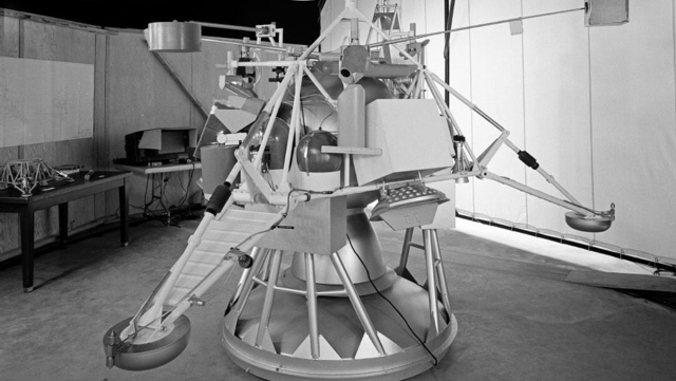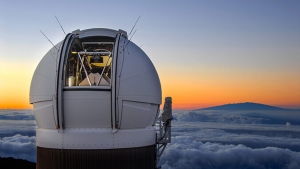
Earth has captured a tiny object from its orbit about the Sun and will keep it as a temporary satellite for a few months before it escapes. But the object is not an asteroid; it’s likely an upper stage booster rocket that helped lift NASA‘s ill-fated Surveyor 2 spacecraft toward the Moon in 1966.
University of Hawaiʻi’s Pan-STARRS1 telescope atop Haleakalā spotted the object in September 2020. Astronomers at the NASA-funded survey telescope noticed it had an unusual motion—it followed a slightly curved path in the sky, which is a signature of it being nearby, with the curvature caused by the rotation of the observer around Earth’s axis as Earth spins. Initially assumed to be a regular space rock orbiting the Sun, it was given an asteroid-like designation: 2020 SO.

“We were pleased to discover this object via its slightly curved motion, even though it was of artificial origin,” said UH Institute for Astronomy Astronomer Richard Wainscoat, who leads Near-Earth Object observations at Pan-STARRS. “We hope this technique will lead to further interesting discoveries of nearby objects, especially asteroids that might be temporarily captured into Earth’s orbit.”
But scientists at the Center for Near-Earth Object Studies at NASA‘s Jet Propulsion Laboratory in Southern California saw the object’s orbit and suspected it was anything but a normal asteroid.
Most asteroids’ orbits are elongated and tilted relative to ours. But 2020 SO was moving slowly and following a nearly circular orbit around the Sun, closely matching that of Earth’s. In addition, the object’s orbital plane almost exactly matched that of our planet—highly unusual for a typical asteroid.
As astronomers at Pan-STARRS and around the world made additional observations of 2020 SO, the data also started to reveal the degree to which the Sun’s radiation was influencing 2020 SO‘s trajectory—an indication that it may not be an asteroid at all but a suspected rocket booster.
Space Age artifact
The Surveyor 2 lunar lander was launched toward the Moon on Sept. 20, 1966, on an Atlas-Centaur rocket. The mission was designed to reconnoiter the lunar surface ahead of the Apollo missions that led to the first crewed lunar landing in 1969. Shortly after lift-off, Surveyor 2 separated from its Centaur upper stage booster rocket as intended. But it lost control a day after launch when one of its thrusters failed to ignite, throwing the spacecraft into a spin. The spacecraft crashed into the Moon just southeast of Copernicus crater on September 23, 1966. The discarded Centaur upper stage rocket, meanwhile, sailed past the Moon and disappeared into an unknown orbit about the Sun.
Now, in 2020, the Centaur appears to have returned to Earth for a brief visit. Before it leaves, it will make two large loops around our planet, with its closest approach on December 1. During this period, astronomers will get a closer look and confirm if 2020 SO is indeed an artifact from the early Space Age.

